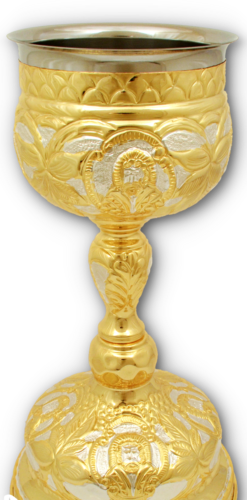
“With Fear of God with Faith and Love… ”
During Great Lent we are given the medicine of eternity, Holy Communion, not only on Sunday or Saturday, but during the week at each Pre-Sanctified Liturgy. At every Divine Liturgy, we are called to partake of Christ with the words: “With the Fear of God, with Faith and Love draw near” The fear of God is not the type of fear that means we are petrified and so terrified of God that we quake and live in horror; instead this “fear” is awe, reverence and veneration. We know the holiness of God as Trinity and our separation from Him caused by our own sinfulness. This awe requires us to look at ourselves honestly and to understand the great gulf between us and Our Lord. But, there is more to the invitation to the Chalice than fear. There are two more phrases that we need to consider.
With faith! How can we approach God without faith? We understand the great gulf between us, but faith can overcome this separation. This faith is faith in the Incarnation of Jesus Christ, Our Lord becoming one of us; truly God and truly Man. This faith is a faith in His great mercy. His love and mercy for His creation is so great that He put on our humanity through the Theotokos and by the Holy Spirit. His love for us allows us to relate personally to Him. He assumed our nature to decrease the separation between us. This mystery is beyond our understanding. The result of His love for us is to lessen the “fear” we have of Him, but to increase the awe we have in our hearts for His great love for us. How can we fear a God who loves us so much as to become man for our salvation? Can we live in dread of someone who is there waiting for us to reach out to Him. He waits so that His strength supports us in every moment of our weakness no matter what that is. With faith, we are certain that He is our gentle shepherd who searches us out when we’re lost and carries us on His shoulders when we’re too weak to walk to Him. This faith is a faith in God’s love for us. This faith is an assurance of Christ’s continued presence among us, His people.
When we realize Christ is there in the chalice waiting for us, there is only one response – Love. Love for God, a burning desire for Him to be the centre of our life. With the invitation of the Church, we are called to partake and become one with Him. Not only are we invited to become one with Him, but also to become one with all who share in His Cup. This is true love, to become part of each other. Love is only love when it is shared with another. Christ became one of us and shared our nature because of His love. By sharing Him, we share in each other. It is a miracle of His love that we enter into an intimate relationship with each other as a community of faith. As we partake of Holy Communion, “With the fear of God, with Faith and Love,” not only do we draw near to Christ; but equally near to each other. The closeness of this bond is the unity that makes us the Church, Body of Christ with one head – Our Lord God and Saviour, Jesus Christ. Answer the invitation! Let us meet Christ and each other at His Cup of Love each time we are prepared to be one with Him. Have a blessed Great Lent!
Yours in His Love…… Fr. George
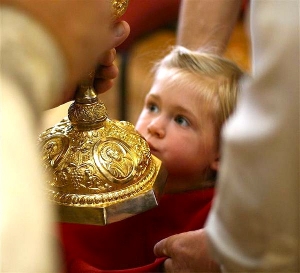

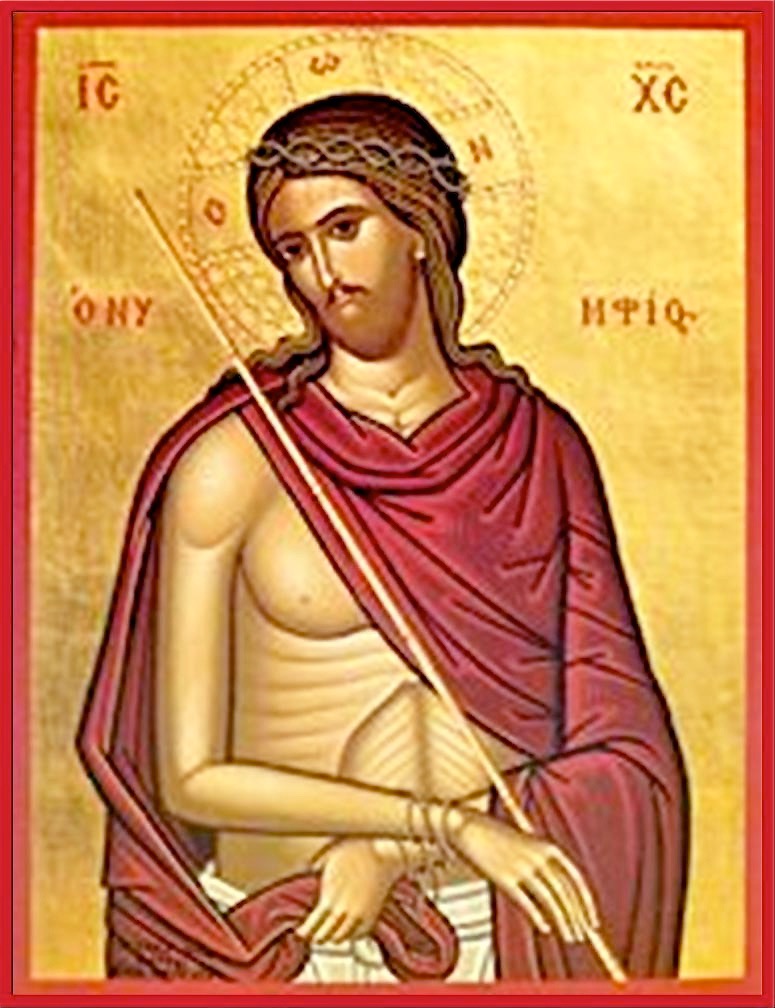
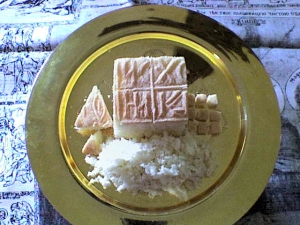
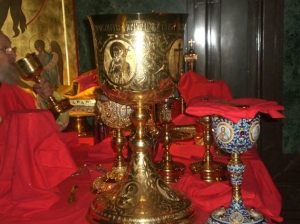
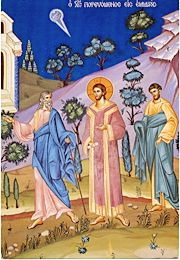

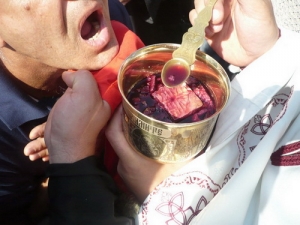
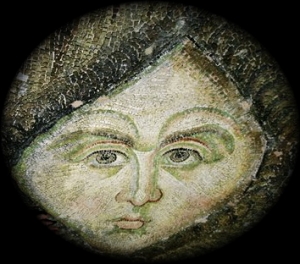
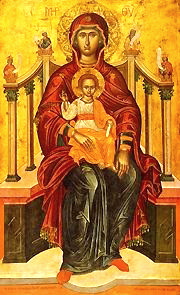
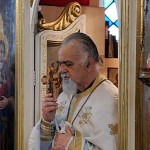 [/caption]
The priest blesses and calls for “peace for the congregants and they respond asking for his spirit to be peaceful. Clergy exchange the Kiss of Peace. With the exception of the personal pronouns “we and us,” peace is the single most often used word in our liturgy. After focusing on the centrality of peace in the liturgy, Elisabeth then discusses the effect that nationalism and national identity influence the Church and its mission to strive for peace among nations. No doubt, complex geopolitical issues affect the closely knit church-state relations in many Orthodox countries. Behr-Sigel points out areas of concern to Orthodox peoples; Serbia (note the date of the article), Palestine, and the cooperation of Constantinople, Russia and the WCC and peace efforts. Never the less, the increased presence of Orthodoxy in the west should help provide a catalyst for a pan-orthodox peace movement. For further information link to the Orthodox Peace Fellowship (
[/caption]
The priest blesses and calls for “peace for the congregants and they respond asking for his spirit to be peaceful. Clergy exchange the Kiss of Peace. With the exception of the personal pronouns “we and us,” peace is the single most often used word in our liturgy. After focusing on the centrality of peace in the liturgy, Elisabeth then discusses the effect that nationalism and national identity influence the Church and its mission to strive for peace among nations. No doubt, complex geopolitical issues affect the closely knit church-state relations in many Orthodox countries. Behr-Sigel points out areas of concern to Orthodox peoples; Serbia (note the date of the article), Palestine, and the cooperation of Constantinople, Russia and the WCC and peace efforts. Never the less, the increased presence of Orthodoxy in the west should help provide a catalyst for a pan-orthodox peace movement. For further information link to the Orthodox Peace Fellowship ( [/caption]
The kenosis of Our Lord is at the center of Orthodox theology. God humbling Himself to take on flesh, so that He could identify with us His creation is the essence of His salvific mission in obedience to the will of the Father. The hymns, poetry and art of the Church bear witness to this tenet. Behr-Sigel describes the prevalence of this concept in Russian theological thought and literature. The monastic vocation is a true reflection of this theological concept and has been since its inception in the Egyptian and Palestinian deserts. Modern Greek theologians Zizioulas, Nellas, and Vlachos; in addition to many familiar Russian theologians have written about this aspect of Orthodox theology. Dr. Behr-Sigel masterfully weaves the theme of kenosis and its imprint on the soul of Russia and her people.]]>
[/caption]
The kenosis of Our Lord is at the center of Orthodox theology. God humbling Himself to take on flesh, so that He could identify with us His creation is the essence of His salvific mission in obedience to the will of the Father. The hymns, poetry and art of the Church bear witness to this tenet. Behr-Sigel describes the prevalence of this concept in Russian theological thought and literature. The monastic vocation is a true reflection of this theological concept and has been since its inception in the Egyptian and Palestinian deserts. Modern Greek theologians Zizioulas, Nellas, and Vlachos; in addition to many familiar Russian theologians have written about this aspect of Orthodox theology. Dr. Behr-Sigel masterfully weaves the theme of kenosis and its imprint on the soul of Russia and her people.]]>